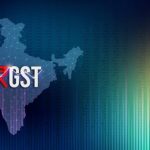Nowadays, the GST department issues various notices and orders to GST registration holders for past years, often leading to demand notices. However, GST registration holders should be aware that each notice and order has a prescribed time limit under the relevant act, which the GST department must adhere to. Additionally, if a retrospective notification or circular is issued, it does not automatically apply to every case. It should be carefully reviewed before being considered applicable.
Recently, the Allahabad High Court, in the case of Anita Traders Lucknow. U.P. Thru. Proprietor Aneeta Sharma v. State of U.P. Thru. Prin. Secy. Deptt. of State Tax Lucknow UP. and Another, delivered a significant judgment on February 6, 2025, reinforcing the importance of adhering to statutory time limits under the Uttar Pradesh Goods and Services Tax (UP GST) Act, 2017.
Background of the Case
The petitioner, Anita Traders, challenged the demand order dated December 2, 2023, and the show cause notice dated September 29, 2023, issued under Section 73 of the UP GST Act, 2017. The primary contention was that these notices were issued beyond the statutory time limit prescribed under Section 73(10). The petitioner, through its counsel, argued that the retrospective extension of time under a subsequent notification could not revive proceedings that had already become time-barred.
Legal Issues Involved
The primary legal issue in this case revolved around the interpretation of Section 73(10) of the UP GST Act, 2017, which prescribes a three-year limitation period for issuing orders. The petitioner contended that since the due date for filing annual returns for the financial year 2017-18 was extended to February 5, 2020, the time limit for issuing a demand order expired on February 5, 2023. Any action beyond this date would be void for lack of jurisdiction.
The State relied on a notification dated April 24, 2023, which retrospectively extended the time limit for issuing orders under Section 73(9) for the financial year 2017-18 up to December 31, 2023. However, this notification explicitly stated that the retrospective extension was applicable only from March 31, 2023, and did not cover cases where the limitation period had already expired.
Court’s Observations and Judgment
The division bench comprising Hon’ble Justice Rajan Roy and Justice Om Prakash Shukla carefully analyzed the statutory provisions and the applicable notifications. The court observed:
- Statutory Time Limit Compliance: Section 73(10) clearly states that orders must be issued within three years from the due date of filing the annual return (Form GSTR-9). Since the due date for filing the return was extended to February 5, 2020, the time limit for issuing orders expired on February 5, 2023.
- Limited Scope of Retrospective Extension: The notification dated April 24, 2023, only applied retrospectively from March 31, 2023. Since the time limit had already expired on February 5, 2023, this notification could not be used to justify issuing demand orders thereafter.
- Invalidity of Demand Orders: The demand order and the show cause notice were issued beyond the prescribed time limit, rendering them without jurisdiction. The court, therefore, held that the orders were void and quashed them.
- Relief to the Petitioner: The court further directed that the petitioner’s frozen bank accounts be de-freezed immediately, as the demand order and show cause notice were found to be legally unsustainable.
Precedents Cited
The court also relied on the precedent set in A.V. Pharma Thru. Its Prop. Madhu Vohra v. State of U.P. Thru. Prin. Secy. State Tax Lko. and 2 Others [2024] 78 TAXLOK.COM 046 (Allahabad), where a similar issue was adjudicated. In that case, the court had ruled that demand orders issued beyond the statutory limitation period were without jurisdiction and liable to be quashed.
Impact of the Judgment
This ruling has significant implications for taxpayers and the GST authorities:
- For Taxpayers: The judgment reinforces the protection offered by statutory limitation periods. It ensures that taxpayers are not subjected to indefinite liability due to retrospective notifications extending the time limit after expiration.
- For GST Authorities: The ruling serves as a reminder that any extension of statutory time limits must be applied within legally permissible bounds. Authorities cannot revive time-barred proceedings through retrospective notifications beyond their prescribed scope.
- For Legal Precedent: This judgment strengthens the jurisprudence around the application of limitation periods under the GST regime, ensuring greater certainty and adherence to procedural fairness.
Final Words
Every GST registered person upon receipt of GST order or demand notice should read it carefully. In many cases, the time limit for issuing the order has already expired, yet the department still issues the notices and orders, exceeding its authority. A similar situation has occurred in this case as well.
The Allahabad High Court’s decision in Anita Traders v. State of U.P. rendered the importance of adhering to statutory timelines in tax assessments and demand proceedings. By quashing the demand order and show cause notice issued beyond the limitation period, the court reaffirmed the principle that legal provisions cannot be circumvented through retrospective extensions once the original limitation has lapsed. This judgment serves as an essential reference for taxpayers and legal practitioners navigating similar issues under the GST framework.






